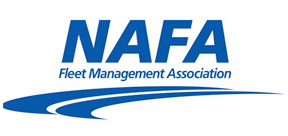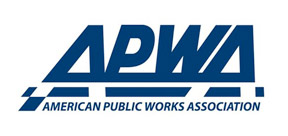St. Louis to introduce municipal ID card

In an effort to make identification more accessible and inclusive to all its residents, the city of St. Louis, Mo., is planning to introduce the Gateway Card – a municipal ID card that not only seeks to serve as identification, but also help residents connect to services and businesses, as well as with each other.
Years in the making and the culmination of significant collaborative efforts between city government leaders, community advocates and service providers, the Gateway Card has the potential to become a primary tool for civic engagement and empowerment.
The Gateway Card is the product of continued advocacy within the city. Alderwoman Daniela Velázquez, who sponsored the legislation that created the program, refers to it as a “people-driven process” shaped by the residents of St. Louis, not just for them. “There was a fantastic, committed group of advocates and constituents who were hungry for this to happen,” Velázquez stated. “We wrote the legislation with their voices as the top priority, and it was unanimously passed by the board of aldermen.”
The American Civil Liberties Union and local advocates were among the first to call for a municipal ID, arguing the importance of identification in everyday life. From finding housing and employment to health care and banking, the ID card rollout would change at-risk individuals’ lives in real time, supporters of the idea said.
Weighing access against security was one of the biggest hurdles in launching the Gateway Card. “You always have to balance with any piece of legislation, making the policy and deciding how to make it work so that it can be responsive to community needs,” Velázquez said. The staff deliberately did not want to over-regulate or make it burdensome to enroll and reserved space for flexibility for the program manager and for growth of the program over time.
As Theresa Bush, St. Louis director of communications, put it, conveying the concept and earning the trust of various stakeholders was a key concern.

“The greatest developmental challenge was finding the balance between accessibility and security,” she explained. “We wanted to create something that would address residents where they are yet still be secure enough to be trusted by institutions.”
The doubt concerning whether institutions such as St. Louis Community Credit Union, which pledged to take the Gateway ID as valid to open a bank account, would indeed do it proved to be unwarranted. Nevertheless, Velázquez stated, “There were a lot of letters of support, including one from one of the largest food pantries in the city,” she said. “People understood the need, especially for homeless individuals and victims of domestic violence, who often have no form of ID.”
The Gateway Card will be rolled out this summer or in early fall through in-office appointments. Internet applications could be down the line, but for now the city will begin with a secure and convenient procurement process. Additionally, applicants will receive their IDs on the same day they come in, an enormous convenience for those in urgent need.
To obtain a card, residents will need to present other forms of identification and residency. The program will provide options for those who are not in a position to offer a continuous address; letters from homeless shelters or welfare agencies will be acceptable, using agency addresses as a proxy. Access for St. Louis’s linguistically diverse constituency will be facilitated through multilingual assistance.
Most excitedly for all, the card will be offered for free.
“We did not want to have any barriers at all,” Velázquez said. “Rather than instituting a sliding scale or taking money, we thought that it should be free so that everyone can truly be involved in the life in their community.”
While not a substitute for a state-issued ID or Real ID, the Gateway Card will provide general access to city services, discounts and collaboration with local businesses and cultural institutions. “We’re anticipating partnerships,” Bush said. “Several businesses have already pledged to accept the Gateway ID and offer discounts, and we invite others to reach out to us.”
The city is working with transit agencies, nonprofit agencies and banking institutions to increase the card’s use. A photo ID can unlock crucial services such as work opportunities, housing, social services and banking that other residents take for granted but that remain inaccessible to those without identification.
While the card will not be usable for voting or buying age-restricted items, it may be accepted by banks and police. City government officials are lobbying to make those groups understand the program and its benefits.
In creating the Gateway Card, officials sought the advice of other cities, including Kansas City, New York and Chicago. Those cities have already implemented similar programs and developed best practices in verification and fraud prevention.
The Gateway Card will not expire often. It will be valid for five years for children and 10 years for adults under age 65. It will have no expiration for seniors 65 and older as long as their data is up to date, an example of removing the stress of renewal on a regular basis, especially for vulnerable populations.
In order to get the Gateway Card to as many residents as possible, city representatives are meeting with community partners to raise awareness and support. As the launch date approaches, they will begin wider outreach and marketing efforts.
Success will be measured through several metrics: number of cards issued, diversity of populations served, partnerships formed and user feedback. “We’ll evaluate regularly and remain responsive to the needs of the community,” said Bush. “This is about creating something that’s living and evolving.”
Despite a few naysayers, the community has largely been receptive. “People are hungry,” Velázquez said. “There’s going to be resistance to anything new, but most recognize the Gateway Card for what it is: an opportunity to belong, to access, to engage.”
St. Louis officials already are looking to the future, with ideas to increase the functionality of the card and establish further partnerships down the line. The dream is that the Gateway Card will not only address the municipal identification void but also build community and promote civic engagement.
Next Article: Small town, big strides: Paw Paw makes major municipal improvements


